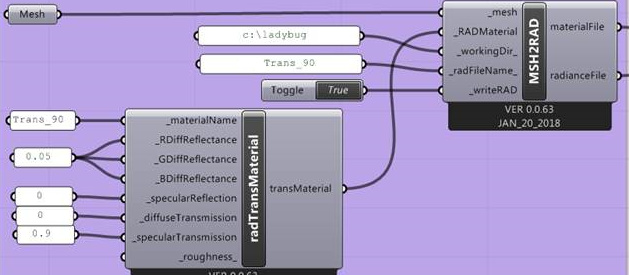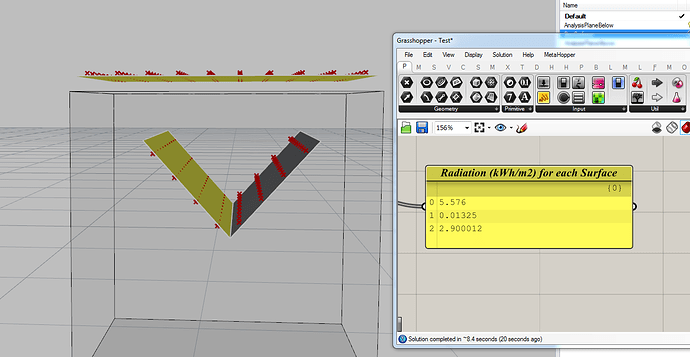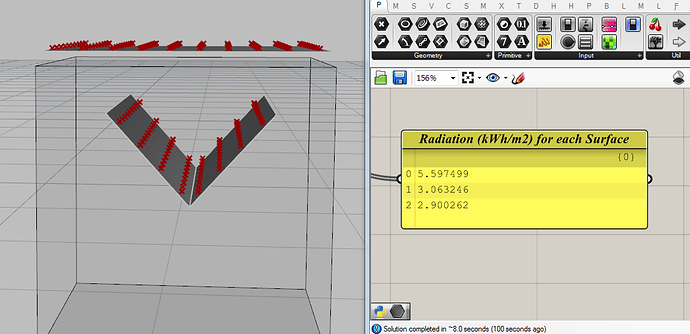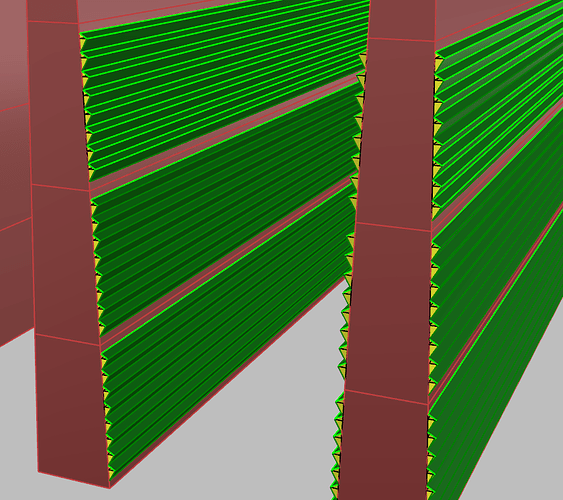Hi Sarith,
Thanks for the reply and the information. I briefly went through the links you sent. I can understand how the calculation is done for a hemisphere decided by the surface normal and not as a sphere. Tilting the calc plane changes the hemisphere and now I can understand what you meant.
This makes me question the way I understood setting up analysis points in space. If I have an analysis plane floating horizontally in a room lets say, I would expect the analysis points to capture the radiation/illuminance from all directions. I wasn’t expecting it to be dependent on the surface normal of the analysis plane. If not taken into account this would significantly change the results. As in the 2 pictures above, I would have expected about the same results on the \ / planes.
As for the trans material, there is no glass/trans material involved in the results I have posted.
My aim was to capture photons received by plants on a vertical wall. I decided to use a transparent material representing my plants and place my analysis points behind the glass/trans material to calculate total radiation absorbed.
As pointed out in this discussion, using glass is ‘materially’ incorrect as it would have different reflection properties. Also, running some tests I found out that a 0.9 reflectance glass with 100 unit incident radiation transmited only 86 units whereas a trans material with 0.9 specular reflection passed 89-90 units.

Now that I am aware, I will take care in future about my analysis surface normals. However I am not sure if everyone using honeybee for daylight/radiation simulations is aware of it. It can lead to significant change in the results. I don’t know if it is something that can be taken care of in future or that’s the way radiance works.
Thanks again for the input.
Regards
Saket


